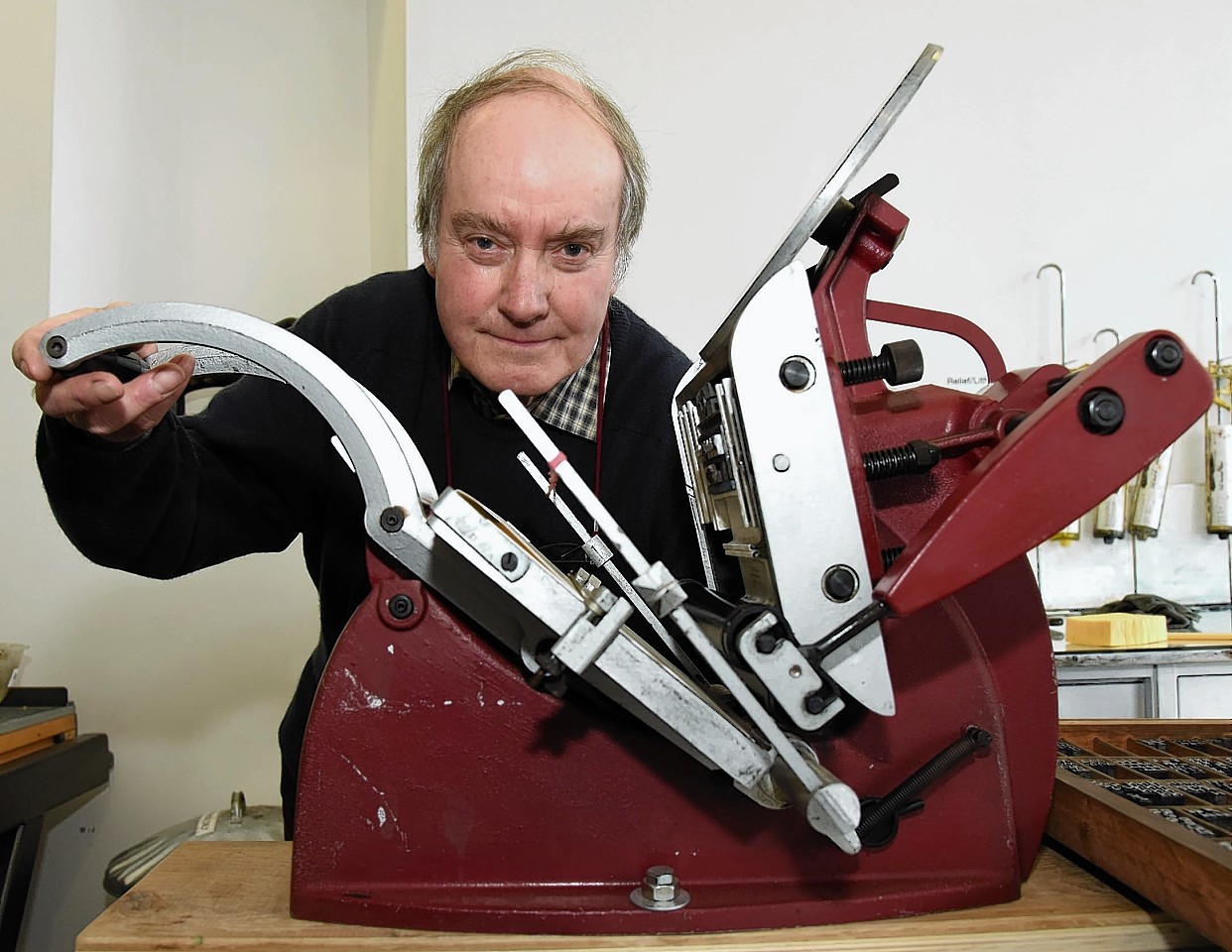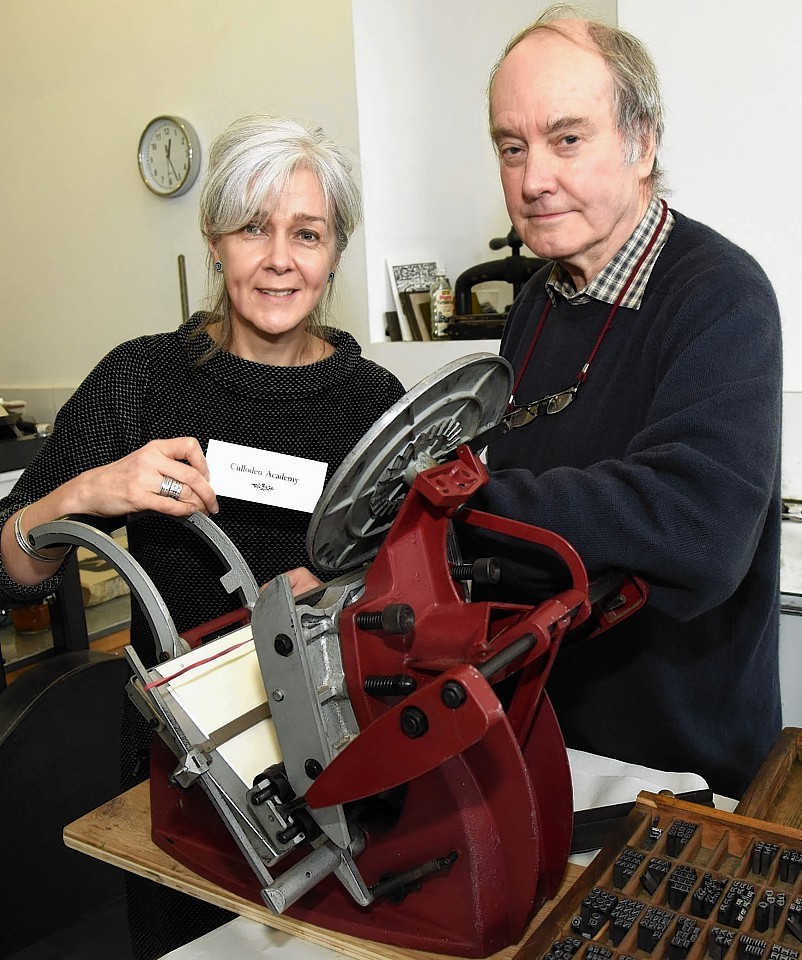Art students from two Inverness-shire schools have been presented with a refurbished 100-year-old printing press in recognition of their fine artwork.
The sixth year pupils, five from Culloden Academy and one from Fortrose Academy, were given the historic Adana Press model by Tim Honnor, founder of Nairn-based Piccolo Press.
Mr Honnor discovered the old machine inside a cupboard in Culloden Academy’s art department when he gave a talk to the students and decided it needed restoring.
Yesterday at the Highland Print Studio on Bank Street, Inverness, a card displaying an image of Culloden Academy was presented as the first product of the restored machine.
The senior pupils were presented with the printing press as part of a National Association of Decorative and Fine Arts Society (NADFAS) initiative, which pays for pupils to take life drawing classes outside of class.
The scheme has been running for about three years and has helped a number of students get into prestigious art schools like Gray’s in London, Glasgow School of Art and Duncan of Jordanstane in Dundee.
Mr Honnor said: “The computer is just a bit boring and this is more rewarding. When you set the type and you get the first image it is really quite exciting.
“You can actually do quite a lot on the machine. You can do letter heads, correspondence cards, tickets, and the challenge is in composing the letters yourself. And these students like it.
“The hope is that someone will print their name and the next person will see it and think, “that looks good,” and then people will start printing a bit more and the art department may even end up using it for school administration.”
Debbie Owen, young arts co-ordinator for the Highland branch of NADFAS, said: “I think the printing press really shows people true quality. You can really see when something is printed properly and it is a huge difference to a computer. It is like an antique, you can really see the quality in it whereas photocopying is more like a throwaway thing.”

